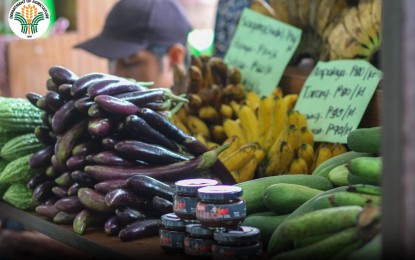
AFFORDABLE. Fresh products in a Kadiwa ng Pangulo store in Tacloban City in this Feb. 2, 2024 photo. Kadiwa stores are present in five out of six provinces in Eastern Visayas as part of the government’s effort to make affordable agricultural products more accessible to consumers. (Photo courtesy of Department of Agriculture Eastern Visayas)
TACLOBAN CITY – Kadiwa ng Pangulo stores are available in five out of six provinces in Eastern Visayas as part of the government’s effort to make affordable agricultural products more accessible to consumers.
Farmer groups regularly sell their produce in the capital towns and cities of Leyte, Samar, Eastern Samar, Biliran and Southern Leyte.
They will soon set up a Kadiwa store in Northern Samar, said Department of Agriculture (DA) regional agribusiness and marketing assistance division chief Francis Rosaroso.
“We have been collaborating with partner agencies to talk about holding more frequent or regular sales of affordable agricultural products in different strategic areas in the region by setting up Kadiwa ng Pangulo stores,” Rosaroso said in an interview Tuesday.
As of the end of 2023, at least 24 Kadiwa stores have been set up and maintained by the DA in partnership with the local governments and other national government agencies.
The DA released at least PHP23 million grant to 15 farmer cooperatives to expand their businesses, and provided some PHP25 million to local governments to set up the Kadiwa ng Pangulo stores last year.
Kadiwa is a marketing strategy of the DA that directly connects food producers to consumers, making products less costly.
It seeks to empower the farming community by providing a direct and effective farm-to-consumer food supply chain.
Rosaroso said the model eliminates many marketing layers, allowing producers to earn more from directly selling their produce instead of using trader-intermediaries.
It reduces marketing expenses, thus making fresh and quality products more affordable for consumers. (PNA)
